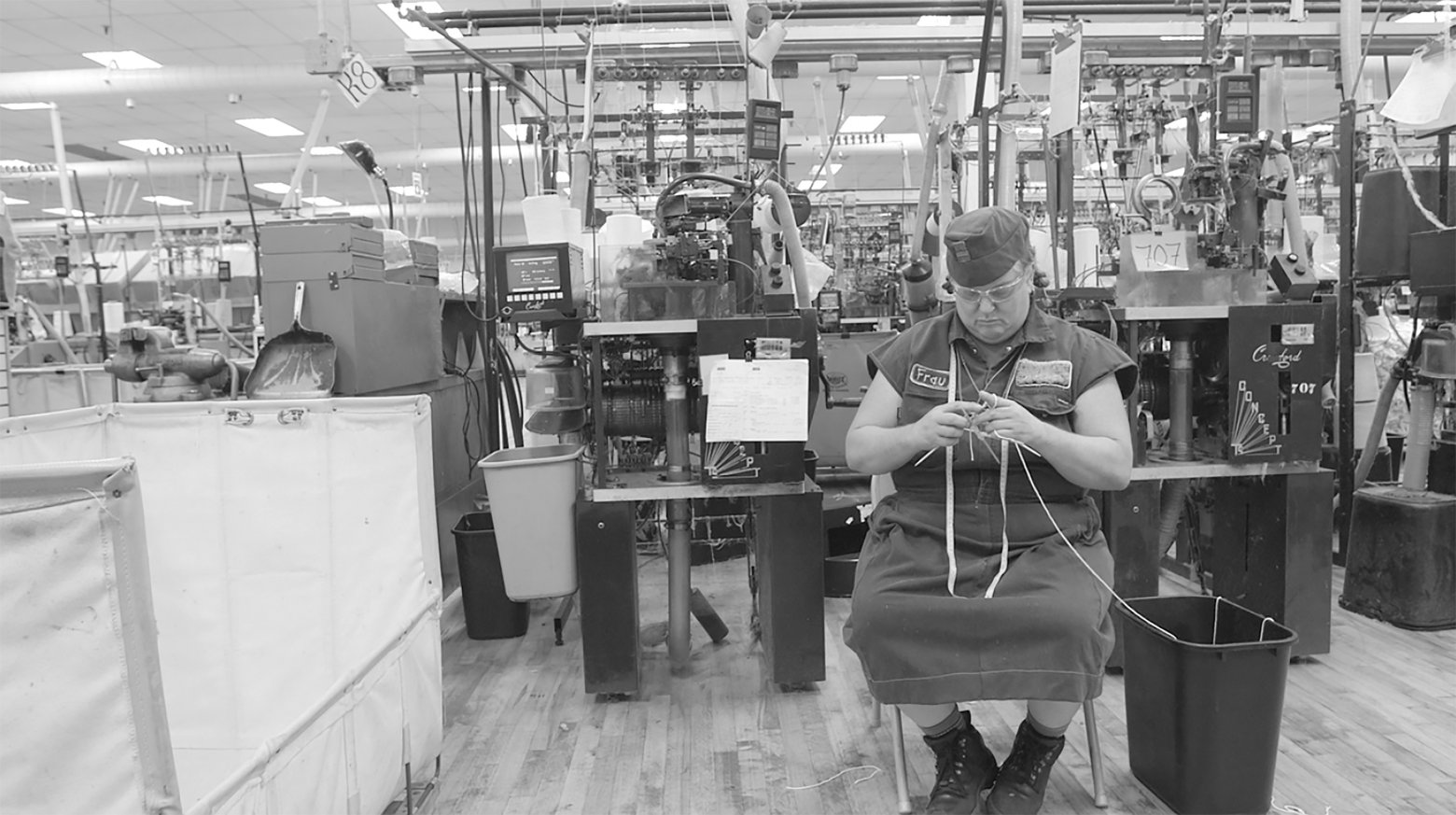
"Frau Fiber vs. the Circular Knitting Machine" (2015), by Carole Frances Lung. (Courtesy of International Ladies' Garment Workers' Union Archive)

"Frau Fiber vs. the Circular Knitting Machine" (2015), by Carole Frances Lung. (Courtesy of International Ladies' Garment Workers' Union Archive)
A new art exhibition just blocks from the White House brings awareness to the environmental and humanitarian costs of hyper affordable fast fashion.
Fast Fashion / Slow Art, showcased at the Corcoran School of Art & Design, was co-curated by Bibiana Obler, associate professor of art history at the Corcoran, and Phyllis Rosenzweig, curator emerita at the Hirshhorn Museum and Sculpture Garden. The film-centric exhibition features pieces from an international pool of artists such as German filmmaker Hito Steyerl and Chinese director Wang Bing.
“One might think, given the title, that’s a very didactic exhibition saying, ‘Fast fashion is bad! Lets fight it,’” Obler says. “But, that’s not actually the message we want to convey. We want to start a conversation, especially because these issues are so complicated.”
The wasteful nature of the clothing industry has come to the forefront of fashion conversation in recent years. Brands that built empires on cheap, trendy clothing, such as the international retail giant Zara, are even promising to change their ways.
Just this summer, Zara’s parent company Inditex announced their plan to make their brands more sustainable by converting to 90% organic, recycled, or sustainable raw materials by 2025. However, these steps are not getting to the heart of the problem: the immense amount of clothing that is made from these or other materials. The amount of clothing produced each year doubled from 2000 to 2014 and the amount of clothing purchased by an average consumer rose 60%.
While it is easy to think of sustainable fashion as a consumer issue, Fast Fashion / Slow Art forces audiences to face the opposite side of the coin and consider how the garments that line our closets were made in the first place.
The exhibition depicts the issues as largely cultural. Martin de Thurah’s film “Stories,” for instance, plays with the concept of disposability as it shows a model taking off T-shirt after T-shirt and tossing each on the ground as she walks down a city street.

According to Obler, the lack of value we place in our clothing is central to the problem.
“I have a certain relationship to shopping and it turns out it’s very different than people of your generation,” Obler says. “While I, personally, do shop fast fashion because it’s cheap, I then expect to keep (the clothing) forever. The whole notion that you can buy a T-shirt and only wear it once is totally alien to me. That doesn’t make sense. In talking to my students, who are increasingly conscientious consumers and are increasingly thinking about these issues while they shop, they have a certain expectation of the amount of shopping that they will do in a year that is just completely different than mine.”
Zara and many other brands that line our shopping malls and retail streets maintain their low prices by outsourcing to poor countries where sweatshop workers earn as little as 1 U.S. cent an hour. Exploitative labor allows clothing items to be sold at the same price as a cup of coffee. As a result, consumers toss their clothing more freely. The average American throws out 81 pounds of clothing each year.
Fast Fashion / Slow Art brings the hidden costs of fashion to the forefront with pieces such as “15 Hours,” an uncut film by Wang Bing that shows the grueling 15-hour day of one garment worker in Huzhou, China.

Other works beg the onlooker to consider the relationship between laborer and machine in modern manufacturing. American textile artist Cat Mazza created one of the few non-video pieces in the show. In her work, “Electroknit Dymaxion,” Mazza replicates the most popular traditional weaving styles from each continent using software called knitPro, which digitally translates images into textile patterns. The patterns were then knit in cotton by machine.
The result is a massive patchwork that speaks to something beyond the technological age: the timeless similarities and connectedness of humans across continents.
“The goal is that these are not simply things that you can kind of go in and look out and think, ‘Oh, what shame that fast fashion is such a problem,’ and then leave again,” Obler says. “The idea is that you stay awhile and that you don’t just have an aesthetic experience and that you also really are compelled to think a little further, even if you’ve thought a lot about these issues.”
—
Fast Fashion / Slow Art is showing at the Luther W. Brady Art Gallery at the Corcoran School of Art & Design through Dec. 15. The exhibition is open Tuesday through Sunday, 1-5 p.m. It will reopen at the Bowdoin College Museum of Art in Maine in spring 2020.